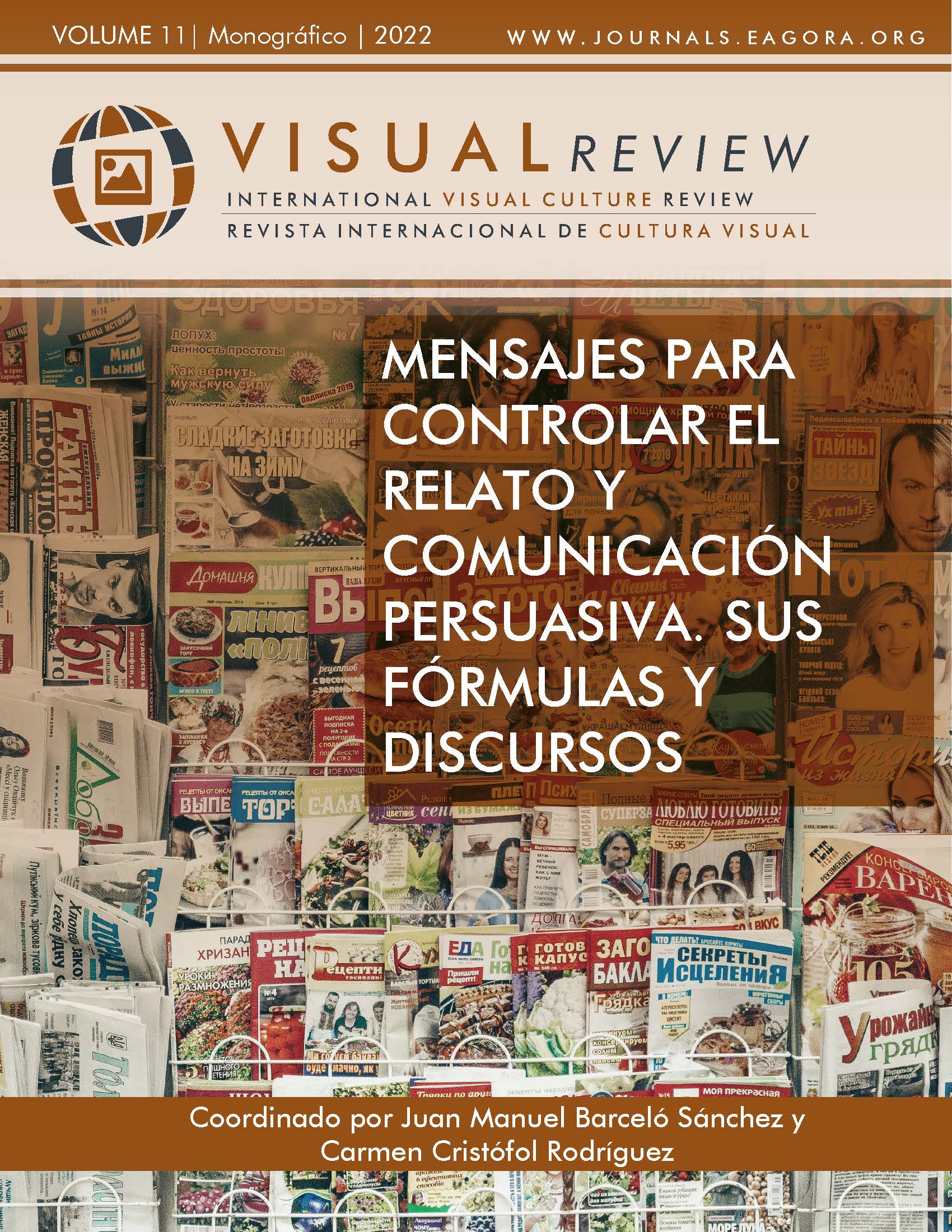Terror in post 9/11 art
The 9/11 attacks as inspiration for arte and cinema
DOI:
https://doi.org/10.37467/revvisual.v9.3654Keywords:
Terrorism, Arte, Fear, 9/11, Literature, Cinema, PaintAbstract
September 11, 2001 was one of the most tragic days in recent human history. A terrorist attack put the entire Western society in check, showing an enormous force and destroying the lives of thousands of free citizens. Conspiracy is one of the most widespread theories to explain the origin of these attacks, but also money, religion and power. With almost 3,000 murdered and numerous unidentified human remains, the main documents remain undeclassified by the US administration, after having passed four different presidents, both Republicans and Democrats.
Downloads
Global Statistics ℹ️
|
528
Views
|
434
Downloads
|
|
962
Total
|
|
References
Películas en DVD
AA.VV. (2002). 11’09’’01 [película].
Burns, E. (2001). Las aceras de Nueva York [película].
Daldry, S. (2011). Tan fuerte, tan cerca [película].
Greengrass, P. (2006). United 93 [película].
Moore, M. (2004). Fahrenheit 9/11 [película].
Stone, O. (2006). World Trade Center [película].
Wenders, W. (2004). Tierra de abundancia [película].
Webgrafía
https://rendering.911memorial.org/artists/christopher-saucedo/
https://web.museodelamemoria.cl/publicaciones/botero-abu-ghraib/
http://www.donnalevinstone.com/
https://www.elcorreo.com/culturas/territorios/destruccion-tema-20180324071018-ntrc.html
https://www.elindependiente.com/tendencias/cultura/2021/09/07/11-s-el-terror-que-modifico-el-arte/
https://elpais.com/elpais/2008/08/21/album/1219300670_910215.html#foto_gal_1
https://www.latercera.com/noticia/creacion-terror-arte-tras-11-s/
https://www.macba.cat/es/arte-artistas/artistas/a-z/muntadas
https://www.metmuseum.org/art/collection/search/789666
https://www.rtve.es/play/audios/24-horas/11s-arte-elena-del-rivero-perdio-toda-su-obra/6091166/
https://www.santiago-sierra.com/index_1024.php
Fuentes secundarias
Alonso Baquer, M. (2003). Arte de la guerra o lucha contra el terrorismo. Cuadernos de estrategia, 119 (2003), pp. 11-42.
AA. VV. (2002). El día de la infamia. Análisis y reflexiones sobre el 11-S. La Esfera de los Libros.
Cardeñosa, B. (2003). 11-S. Historia de una infamia. Las mentiras de la versión oficial. Corona Borealis.
Coronel Pereyra, E. E. (2017). “Abu Ghraib” de Fernando Botero: denuncia desde el arte crítico. FAIA, 6, 29, pp. 1-28.
Faludi, S. (2009). La pesadilla terrorista. Miedo y fantasía en Estados Unidos después del 11-S. Anagrama,
Iturriaga, D. y D. Téllez Alarcia (2013). Aprendiendo a explicar el terrorismo del siglo XXI: una perspectiva desde el cine. En J. J. Díaz Matarranz; A. Santisteban Fernández y Á. Cascajero Garcés (Eds.), Medios de comunicación y pensamiento crítico: nuevas formas de interacción social (pp. 387-396). Universidad de Alcalá.
Iturriaga, D. (2016). El 11-S visto a través del cine: una forma de analizar nuestra historia reciente. En C. del Valle Rojas y C. Salgado Santamaría (Coords.), Nuevas formas de expresión en comunicación (pp. 430-440). McGraw Hill.
Iturriaga, D. (2013). El cine como elemento didáctico para explicar el terrorismo. Historia y comunicación social, 18(Extra 2), pp. 757-765. DOI: https://doi.org/10.5209/rev_HICS.2013.v18.44282
Iturriaga, D. (2011). España, Terrorismo y Arte: Una visión del terrorismo fundamentalistas y sus consecuencias a través del arte español. En W.-L. Zaza y R. González-Casanovas (Eds.). Encrucijadas históricas de la España contemporánea: Textos y contextos que marcan época (pp. 349-360). Ambosmundos.
Iturriaga, D. (2008). Nuevas perspectivas del cine post 11-S. En Mª G. Camarero Gómez; V. de Cruz Medina y B. de las Heras Herrero (Coords.). I Congreso Internacional de Historia y Cine (pp. 899-911). Universidad Carlos III.
Iturriaga, D. (2008). Arte, realidad y crueldad. La visión de Fernando Botero sobre los sucesos de Abu Ghraib”. Inédito.
Le May, A. (1954, 2003). Centauros del desierto. Nebular.
López Rojo, A. (2011). Francesc Torres. Memoria Fragmentada 11-S NY. Artefactos en el Hangar 17. Artecontexto, 32, pp. 120-121.
Nora, P. (1974). Le retour de l’événement. En J. Le Goff y P. Nora (Dirs.). Faire de l’Histoire. Nouveaux problems (pp. 210-240). Gallimard.
Downloads
Published
How to Cite
Issue
Section
License
Those authors who publish in this journal accept the following terms:
-
Authors retain copyright.
-
Authors transfer to the journal the right of first publication. The journal also owns the publishing rights.
-
All published contents are governed by an Attribution-NoDerivatives 4.0 International License.
Access the informative version and legal text of the license. By virtue of this, third parties are allowed to use what is published as long as they mention the authorship of the work and the first publication in this journal. If you transform the material, you may not distribute the modified work. -
Authors may make other independent and additional contractual arrangements for non-exclusive distribution of the version of the article published in this journal (e.g., inclusion in an institutional repository or publication in a book) as long as they clearly indicate that the work was first published in this journal.
- Authors are allowed and recommended to publish their work on the Internet (for example on institutional and personal websites), following the publication of, and referencing the journal, as this could lead to constructive exchanges and a more extensive and quick circulation of published works (see The Effect of Open Access).













